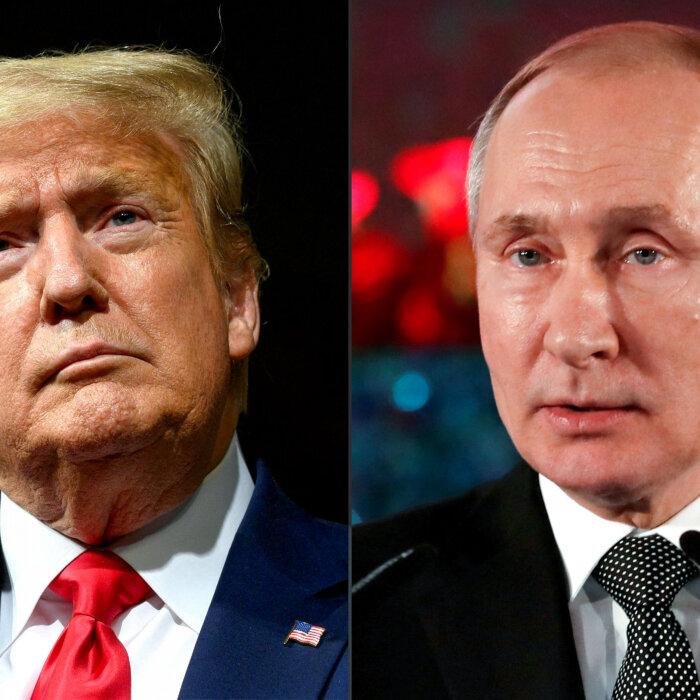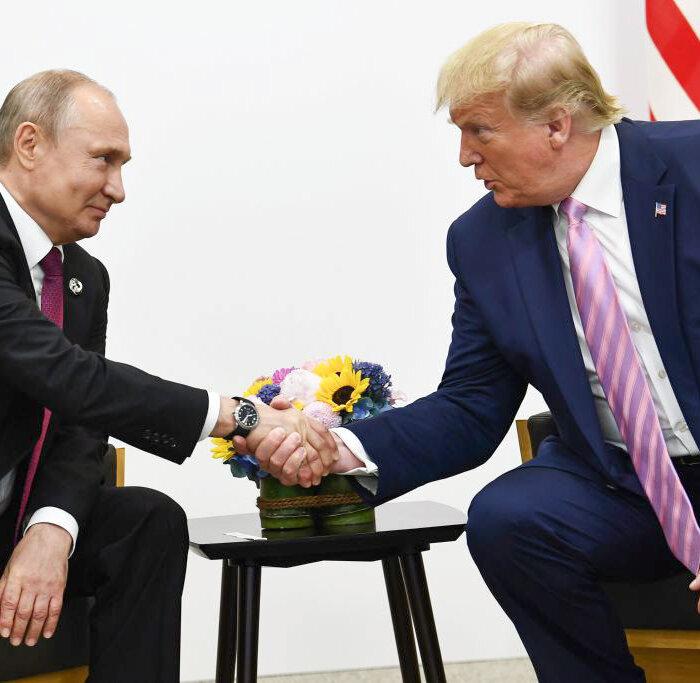What We Understand About Trump’s Strategy to Resolve the Russia–Ukraine Conflict
The Trump administration is swiftly taking steps to establish a cease-fire and terminate Russia’s invasion of Ukraine.
“I believe President Putin seeks peace, President Zelenskyy wants peace, and I want peace,” Trump stated during a press briefing in the Oval Office. “I just want to see an end to the violence.”
Earlier that week, Trump dispatched Treasury Secretary Scott Bessent to Kyiv to discuss preliminary safety frameworks for U.S. security assistance as talks commence.
Vice President JD Vance and Secretary of State Marco Rubio are also scheduled to meet with Zelenskyy and his associates on February 14 at the Munich Security Conference to elaborate on Trump’s peace vision and to formally initiate discussions to resolve the most lethal conflict in Europe since World War II.
However, this process is still in its infancy, and numerous factors relating to trade, diplomacy, security support, and territorial disputes will require resolution in the forthcoming weeks and months.
Here’s what we know up to now about Trump’s peace initiative in Europe.
Ukraine Offers Rare Earths for Security Aid
Trump has often criticized the level of security aid provided to Ukraine by the United States, suggesting that the U.S. should secure economic advantages in exchange for its continued assistance.
This arrangement would be crucial not just for Ukraine’s immediate defense but also for its capability to avert future Russian incursions once a cease-fire is established.

(L–R) Ukrainian President Volodymyr Zelenskyy and former President Donald Trump shake hands during a meeting in New York City on Sept. 27, 2024. Alex Kent/Getty Images
In this context, Zelenskyy and Bessent devised an initial framework permitting U.S. access to hundreds of billions of dollars worth of rare earth minerals in Ukraine in return for ongoing security aid.

Zelenskyy has stated that the framework established with Bessent also includes aspects of “security, economic collaboration, and resource partnerships.”
While not directly linked to the Russian conflict, this initiative is anticipated to lay a significant groundwork for any lasting peace in the area, as it will solidify U.S. business interests in Ukraine and maintain the supply of American-made weapons to Kyiv, regardless of the possibility of a U.S. troop deployment.
The United States also aims to ensure access to Ukrainian rare earth supplies for its strategic interests. Currently, the U.S. is heavily reliant on the Chinese regime for its rare earths, as China is the largest global supplier of many such metals.
By bolstering Ukraine in return for access to rare earths and additional metals such as titanium and lithium, the U.S. can potentially reduce its reliance on China amid increasing instability in the Indo-Pacific.
No NATO Membership for Ukraine, No U.S. Presence
A crucial obstacle in discussions regarding a potential cease-fire has been the issue of NATO membership for Ukraine.
For three decades, Ukrainian leadership has aspired to join the trans-Atlantic alliance. Ukraine was the first former Soviet republic to formalize agreements with the alliance, starting with the Partnership for Peace initiative, which encouraged nations emerging from Soviet influence to seek NATO admission.

Then-NATO Secretary General Jens Stoltenberg (C) addresses Ukrainian lawmakers at the parliament during his visit in Kyiv, Ukraine, on April 29, 2024. Andrii Nesterenko/AFP via Getty Images
Putin has made thwarting Ukraine’s NATO ambitions a key goal of his tenure, and preventing its NATO accession was one of the primary objectives of his wide-ranging invasion in 2022.
Despite its aspirations, Ukraine has never been officially considered for membership in the alliance, and joining remains improbable due to the requirement for unanimous consent from all member states, with some, including Hungary, having declared they would oppose Ukraine’s entry.
U.S. Defense Secretary Pete Hegseth reaffirmed this week that the U.S. would ensure NATO membership is off the table as a strategy to persuade Moscow toward a cease-fire.
“Any security guarantee must involve the deployment of capable European and non-European troops as part of a non-NATO mission, which should not fall under Article Five,” he emphasized.
Article Five of NATO’s founding treaty obliges the alliance’s members to collectively respond to any attack on a member state.
So far, Article Five has been invoked only once, in response to the terrorist attacks on the United States on September 11, 2001.

Secretary of Defense Pete Hegseth speaks at the defense ministers’ meetings at NATO headquarters in Brussels, Belgium, on Feb. 13, 2025. Omar Havana/Getty Images
It’s possible that a fresh treaty alliance among primarily European nations could assume Ukraine’s defense duties, effectively creating a NATO-style organization devoid of U.S. influence.
Although Ukraine may feel disappointed by the U.S.’s rejection of its NATO membership aspirations, the promise of European troops could also be disheartening for Putin, who initially claimed that his comprehensive invasion would yield the complete demilitarization of Ukraine.
Ukraine’s Borders Likely Not Returning to 2014 or 2024 Status
Lastly, the principal issue of land is expected to be the most challenging to resolve.
Since 2014, Ukraine has lost control over a broad section of its territory. Following the ousting of pro-Russian President Viktor Yanukovych in favor of stronger ties with the EU, Russian forces proceeded to invade Crimea. Additionally, Russian-backed separatist movements in eastern provinces gained prominence and declared independence.
The emergence of the so-called Donetsk and Luhansk People’s Republics ignited a brutal conflict in the Donbas region which persists today. Defending Russian speakers in these unrecognized republics was one of the reasons cited by Putin for launching his full-scale invasion in 2022.
Russia also aimed to annex two further regions—Kherson and Zaporizhzhia—that connect Donetsk to Crimea.
However, it appears unlikely that Ukraine can reclaim much of the land lost to Russian control.

Russia’s territorial control in Ukraine. Illustration by The Epoch Times
Consequently, the Trump administration has diverged from the previous NATO and Biden administration strategies by recognizing that Ukraine may have to concede some territory to Russia as part of a peace deal.
“We must begin by accepting that reverting to Ukraine’s borders from before 2014 is an impractical aim,” Hegseth remarked recently.
The acknowledgment of potential land transfer has likely been a factor influencing Kyiv’s strategy on the battlefield.
It remains uncertain which specific areas Zelenskyy intends to reclaim in return for Kursk. Nevertheless, obtaining control of the Russian territory may at minimum allow Kyiv to retain unoccupied parts of Ukraine that Moscow currently seeks.
How far the Trump administration is prepared to continue arming Ukraine during these negotiations is yet to be determined, as is whether Trump will attempt to pressure Moscow into yielding any of the territory it presently occupies.
The White House did not respond to a request for comment before the publication deadline.
Ryan Morgan, The Associated Press, and Reuters contributed to this report.




